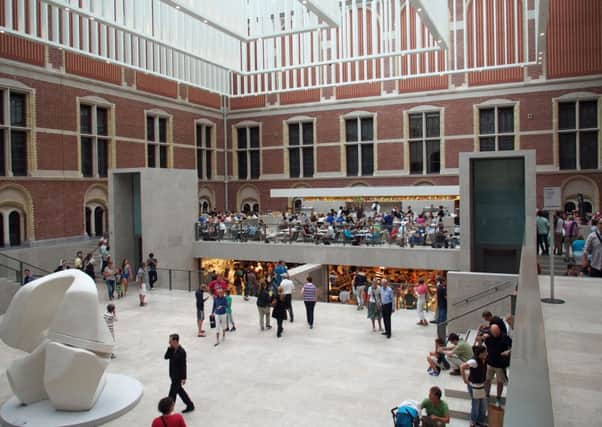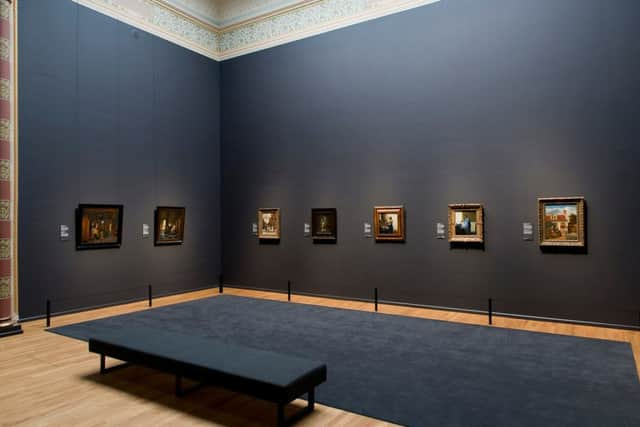Joe Wilson: What one museum did to stop visitors taking photos of its art


In a time when more and more museums, willingly or otherwise, are succumbing to the impossibility of preventing the use of cameras in their galleries, it’s interesting to see one moving in the opposite direction. The Rijksmuseum in Amsterdam, which allows its visitors to take snaps of its collection, decided to reverse this decision for one weekend last month. The move was part of a partnership with UK festival The Big Draw and the intention was to encourage visitors to sketch the objects instead, providing them with blank postcards upon entry to do just that.
It appears a shame for what seems like such an interesting initiative to have been so fleeting. Snap-happy museum visitors are becoming problematic, especially in larger institutions with world famous exhibits. In a discussion with a colleague just the other day, he remarked his confusion on a recent trip to Paris’ Musée d’Orsay at the prevalence of visitors seemingly on a “treasure hunt” in the museum, taking photos of as many things as possible without stopping to really look at any of them. Having worked in museums I have seen this happen on countless occasions, to the point where you would be safe to claim some people’s visits had been experienced exclusively through the screen of their smartphones.
Advertisement
Hide AdThe chief problem with this unusual approach to exploring a museum is that it’s utterly pointless. To my mind there can be only two reasons to take a picture of a museum exhibit. The first is to prove to other people that you have seen it, but this is a distinctly hollow claim if all that you’ve done is find it, photograph it and move on. The second is to allow yourself more time to see an object such as the British Museum’s Rosetta Stone, which is so perennially surrounded by a rabble of visitors that you’d be forgiven for assuming there was a cash machine spitting out free money obscured behind them. There is no need though: for most museum displays and especially marquee objects, there are already better quality images available online for people to view. Just this week for example the British Museum has uploaded an ultra-high resolution image of the much-impeded Rosetta Stone to the Google Cultural Institute.


The Rijksmuseum, one of the most forward-thinking institutions on the planet, is particularly interesting because as of 2012, it has been on a mission to make high quality images of everything in its collection available to download for free from its website. This unprecedented move began with 125,000 images three years ago, with a further 40,000 to be added per year for as long as it takes. Once this undertaking is complete, the Rijksmuseum will become the first in the world where there is literally no need to take photos of its artworks. Moreover, it will be an insult to their efforts if people do. While the Rijksmuseum’s Big Draw activity was merely a two-day event, it could feasibly be a worthwhile permanent policy.
The attraction of the “sketch instead of photograph” initiative is not just that it prevents marauding bands of disengaged visitors filling up their phones with badly focussed images of all the art, quite frankly only ruining it for themselves, but in that it positively reconnects people with what they’re supposed to be looking at. You can’t sketch everything in a museum, so the act of selecting the object you wish to draw requires a more careful thought and consideration of what you have seen. Then, once you have chosen the object you want to draw, sketching it deepens your engagement with it further, forcing you to really spend time examining its aesthetic intricacies. Sketching trumps photography because the limitations it places on quantity demands an individual analysis of the collection as a whole, and time spent interacting with the objects that inspire you the most.
Photography in museums is not some scourge in need of eradication, however. Last month, Wim Pijbes, director of the Rijksmuseum stated said “life is too beautiful not to draw,” but it’s too beautiful not to photograph as well. It is not the museum’s place to pit one artistic medium against another. The point is that the Rijksmuseum’s sketch-only weekend took the positive action of re-engaging a certain type of visitor. People who feel the need to obtain their own collections at museums by photographing everything they like no longer need to do so as they can do it in their own time, from the comfort of their home. Instead, because of its progressive policies towards digital access to its art, the museum was able to encourage people to maximise their time in the galleries by genuinely experiencing its collection. To see the objects the way they are meant to be seen; with their eyes and through an artistic lens, not through the screen of a smartphone.
• This is an edited article from I Think Of Icarus, a museum blog run by Glasgow-based writer Joe Wilson. http://ithinkoficarus.com/